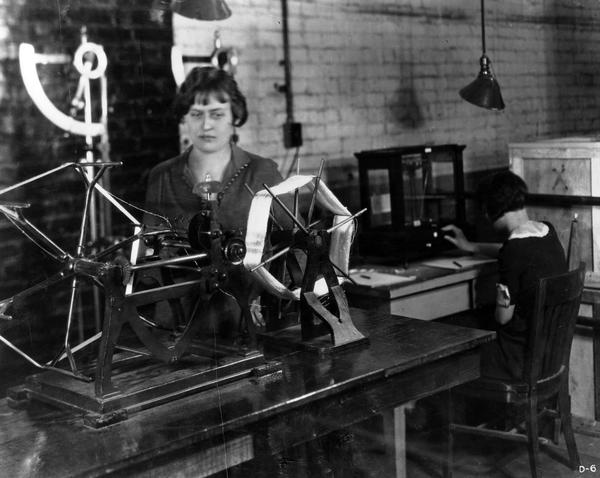
September 30th marks the anniversary of the publication of U.S. Patent No. 9020702A, granted in 1902 to chemists William H. Walker, Arthur D. Little and Harry S. Mork. The patent, for the process of "making of cellulose esters" was the first American patent for a man-made fiber. Soon after, the three also received Patent No. 712200A for "artificial silk".
Initially marketed under the name viscose, the textile industry began referring to the material as rayon in 1924. Unlike many of the man-made fibers being produced by the industry, rayon was not synthetic; it was made from naturally-occurring wood-pulp rather than petroleum-based fibers like nylon.
During the early and mid- 20th century, DuPont was one of the country's leading manufacturers of man-made fibers. The company began experimenting with entering the market in 1909. In 1920, it purchased the American production rights to produce viscose fiber from the French firm Comptoir des Textiles Artificiels, forming the joint enterprise of the DuPont Fibersilk Company, which manufactured viscose out of a plant in Buffalo, New York. In 1925, the company became the DuPont Rayon Company, and opened a second plant at Old Hickory, Tennessee, the former site of its World War I smokeless powder works.
This undated photograph was taken at the company's Spruance Plant in Richmond, Virginia, which was constructed in 1927 as an additional rayon manufacturing site. It shows an employee running rayon yarn for weighing to determine denier, or weight.
This item is part of Hagley Library's collection of DuPont Company Product Information photographs (Accession 1972.341). In 1952, the DuPont Company organized a Product Information section within the Public Relations Department. Its main purpose was to create news releases accompanied by photographs that would be run editorially by trade journals and newspapers to create inexpensive publicity and indirect advertising.
The collection contains photographs of DuPont Company corporate events and proceedings, product trade shows and fairs, development and manufacturing processes, and the employees and facilities where the products were created. Most of the photographs were taken from the 1930s through the 1950s. The collection has not been digitized in its entirety, but you can view a selection of images from the collection, including a variety of items from the 'Man Made Fibers' series, online in our Digital Archives.

